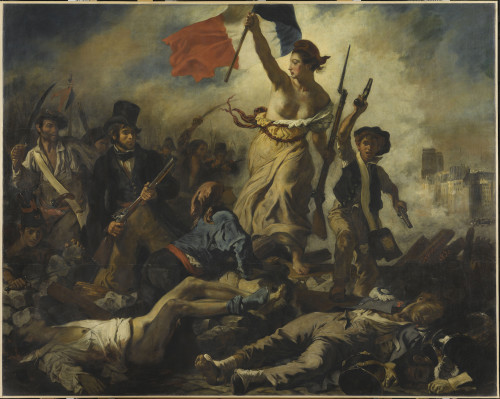Eugène Delacroix was one of the giants of French painting, but his last full retrospective exhibition in Paris dates back to 1963, the centenary year of his death. In collaboration with the Metropolitan Museum of Art in New York, the Louvre is holding a historic exhibition featuring some 180 works—mostly paintings—as a tribute to his entire career. From the young artist’s big hits at the Salons of the 1820s to his final, lesser-known, and mysterious religious paintings and landscapes, the exhibition will showcase the tension that characterizes the art of Delacroix, who strove for individuality while aspiring to follow in the footsteps of the Flemish and Venetian masters of the 16th and 17th centuries. It will aim to answer the questions raised by Delacroix’s long, prolific, and multifaceted career while introducing visitors to an engaging character: a virtuoso writer, painter, and illustrator who was curious, critical, and cultivated, infatuated with fame and devoted to his work. The exhibition will bring together masterpieces by Delacroix from museums in France (Lille, Bordeaux, Nancy, Montpellier, etc.) and exceptional international loans, particularly from the United States, Great Britain, Germany, Canada, Belgium, and Hungary.
Much remains to be learnt about Delacroix’s career. It spanned a little over forty years, from 1821 to 1863, but most of his best known paintings were produced during the first decade. The output from the next three quarters of his career is difficult to define, as it cannot be confined to a single artistic movement. Although Delacroix is often hailed as a forerunner of modern colorists, his career does not always fit a formalist interpretation of 19th-century art.
The exhibition is organized in three sections, presenting the three major periods in Delacroix’s long career and highlighting the motivations that may have inspired and guided his painting. The first section — focusing on the conquest and triumph of the first decade — studies the artist’s break with neoclassicism and his renewed interest in the expressive and narrative possibilities of paint. The second part explores the ways in which his large public murals (his main activity from 1835 to 1855) impacted on his easel painting, with its visible tension between the monumental and the decorative. Finally, the third section shows how his later years were seemingly dominated by a keen interest in landscape painting, tempered by an attempt to extract the essence from his visual memories.
These keys to interpretation allow for a new classification that goes beyond a mere grouping by genre and transcends the classical–Romantic divide, indicating instead that Delacroix’s painting resonated with the great artistic movements of his day: Romanticism of course, but also Realism, eclecticism, and various forms of Historicism.
Exhibition curators: Sébastien Allard, Director of the Department of Paintings, Musée du Louvre; Côme Fabre, Department of Paintings, Musée du Louvre; Asher Miller, Department of European Paintings, The Metropolitan Museum of Art.







